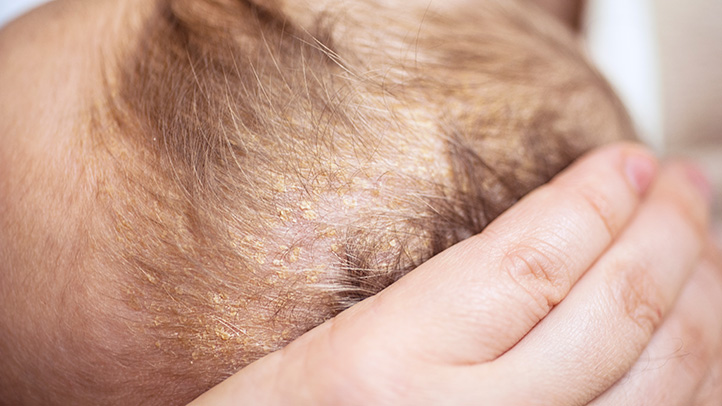HEALTH
How to Deal with Cradle Cap?

Cradle cap is a harmless but common condition that typically resolves on its own, and most babies do not experience discomfort from it. Parents can take simple steps at home to manage and improve their baby’s scalp health effectively.
Cradle cap, a type of seborrheic dermatitis, is a common and harmless skin condition that appears as yellow or white scaly patches on a baby’s scalp. These scales may look greasy or flaky, sometimes accompanied by a mild rash. However, there’s no need to worry as the cradle cap doesn’t cause any discomfort, pain, or itching to your baby. It doesn’t interfere with their health, eating, or sleeping and usually resolves on its own within a few weeks or months. While treatment isn’t necessary, there are simple methods you can try at home to gently remove the scales. You can consider consulting a specialist, like the best paediatrician in Delhi, for the most suitable remedies you can try. Continue reading to learn more about how to manage a cradle cap effectively.
What Does a Cradle Cap Look Like?
When you examine your baby’s scalp, you may notice yellow or white patches of scaly skin that resemble fish scales. These scales often adhere to the scalp and may:
- Flake off over time
- Appear crusted
- Be surrounded by a rash that is lighter or darker than your baby’s natural skin tone (for babies with darker skin tones)
- Be accompanied by a pink or red rash (for babies with lighter skin tones)
If you observe these symptoms, it may be helpful to schedule an online paediatrician consultation. They can assess your baby and determine if special moisturisers or medicated creams are necessary.
How to Manage Cradle Cap?
If your baby has a cradle cap with no rashes on other parts of their body, medical treatment is usually not necessary. Cradle cap often resolves on its own within a few months. However, it’s natural for parents to want to address the issue. There are steps you can take to care for your baby’s scalp and gently encourage those stubborn scales to clear up. Here are some helpful suggestions for treating cradle cap at home:
- Soften the Skin: Before washing your baby’s scalp, apply an emollient like petroleum jelly, plain mineral oil, or baby oil to soften the scales. Avoid olive oil, which may not suit your baby’s skin, and peanut oil due to potential allergies. Gently massage the emollient into the scalp, leaving it on for several hours or overnight before shampooing.
- Shampoo Regularly: Wash your baby’s scalp every other day using a mild, fragrance-free shampoo. Massage the scalp gently with your fingertips or a soft cloth, avoiding any harsh scrubbing. A soft brush can help lift the scales, but if your baby suffers from eczema or some other skin condition, follow the bathing recommendations provided by your dermatologist.
- Avoid Picking at the Scales: While it might be tempting to scratch or pick at the scales to remove them, it’s important not to do this. Picking can create raw areas on the skin and increase the risk of infection for your baby.
- Choose the Right Shampoo: A regular baby shampoo is usually sufficient for washing your baby’s scalp, but ensure it’s mild and unscented. Avoid adult shampoos or those specifically designed for treating dandruff. If regular shampoo doesn’t help control the cradle cap, consider switching to a product formulated for this condition; look for “cradle cap” on the label or consult your dermatologist for recommendations.
- Take Preventive Steps: Once the scales have disappeared, maintain your baby’s scalp by washing their hair twice or thrice a week with a gentle shampoo to prevent future buildup.
- Know When to See a Specialist: If your baby develops a severe rash that spreads beyond the scalp, experiences pain or significant itching, loses hair, or if there is an odour coming from the rash, it’s important to schedule an appointment with a specialist who can provide appropriate prescription treatments.
Cradle cap is a common and harmless condition that usually resolves on its own without the need for medical treatment. However, as a parent, it’s completely understandable to want to care for your baby’s scalp effectively. By following the gentle home care methods outlined above, you can help alleviate the appearance of the cradle cap and ensure your baby’s comfort. If you have concerns or if the condition persists, don’t hesitate to reach out to the best paediatrician in Delhi for guidance. Additionally, for convenience, consider scheduling an online paediatrician consultation to discuss tailored treatment options and get professional advice.
University of Houston graduate with 5 years of blogging experience, excelling in content strategy, SEO, and audience engagement. Connect with me on LinkedIn.